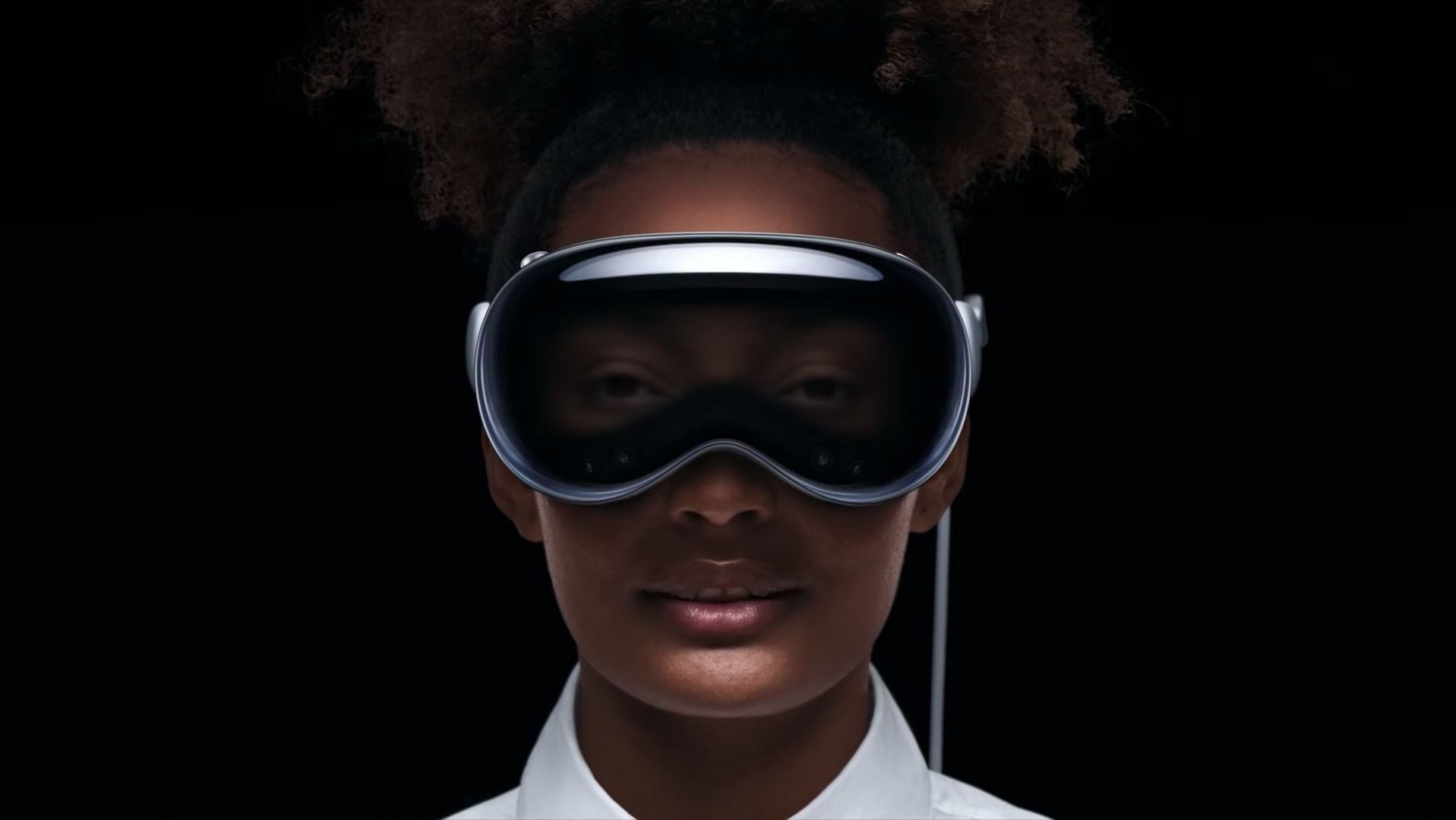
Apple has made a grand entrance into the world of augmented reality with the launch of its much-anticipated headset, the Apple Vision Pro. This marks Apple’s first major hardware launch in almost a decade, and it’s set to revolutionize the way we interact with technology.
The Dawn of a New Era
Apple’s CEO, Tim Cook, described the new headset as a device that “seamlessly blends the real world and the virtual world.” This is a significant leap in technology, bringing us closer to a future where our digital and physical realities are intertwined. The Vision Pro is not just a gadget; it’s a gateway to a new dimension of experiences.
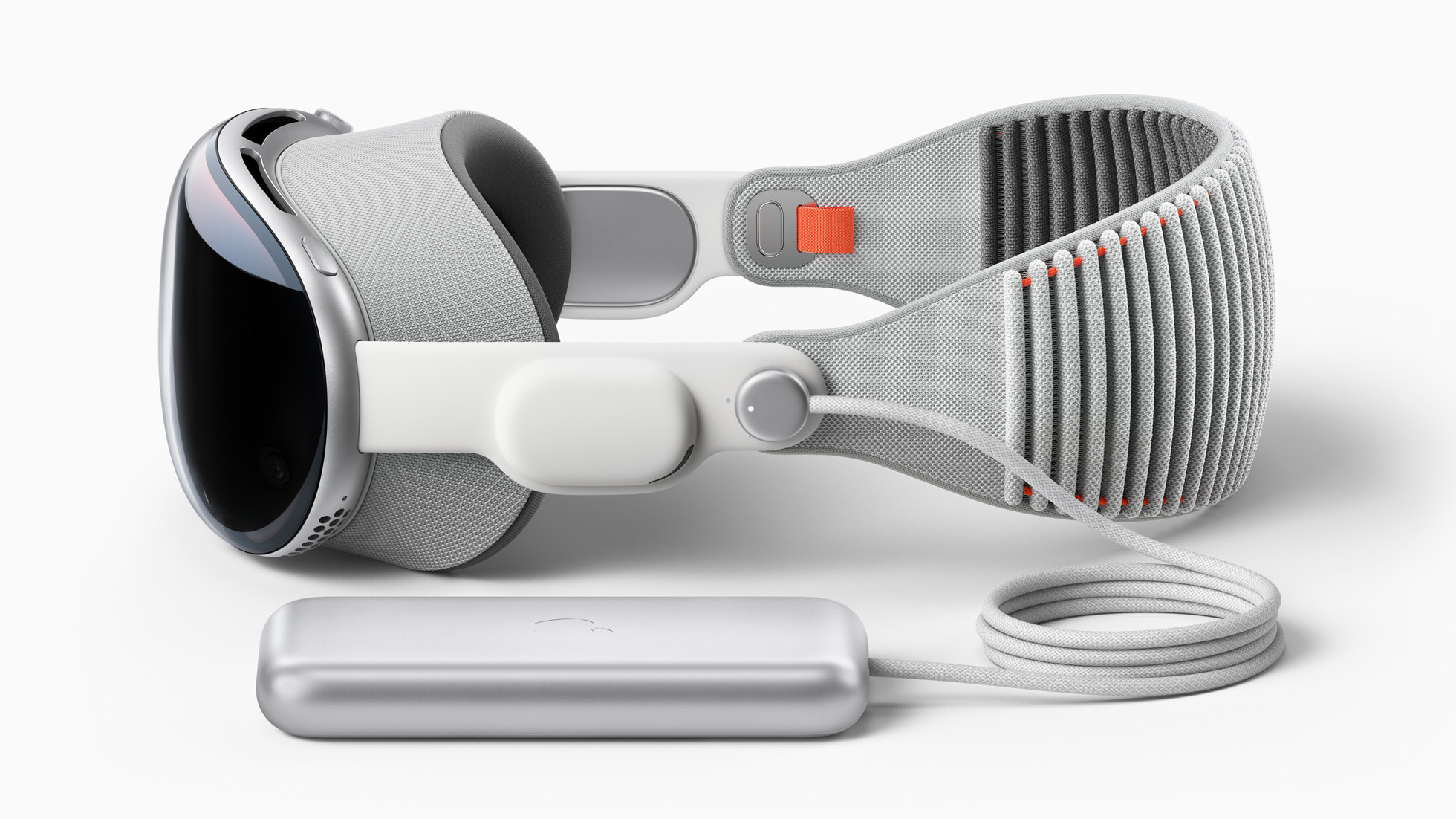
Features and Benefits of Apple Vision Pro
The Vision Pro is packed with innovative features that set it apart from other virtual reality headsets currently on the market. It has a two-hour battery life and is priced at $3,499, positioning it as a premium device. The headset is set to be released early next year in the US.
The design of the Vision Pro is more reminiscent of a pair of ski goggles than a traditional virtual reality headset. It offers a unique experience, superimposing virtual objects in the world around us. This allows us to mix reality with virtual reality by looking through a screen.
Imagine watching videos of your family blowing out birthday candles or immersing yourself in your photography by making your panoramic photos life-size. The Vision Pro is pitched as a device that is “very much about being part of your daily life,” unlike many other headsets on the market geared primarily towards immersive gaming.
Users can access apps, watch movies, and write documents in a virtual world. The headset is controlled using a combination of your hands, eyes, and voice – such as tapping your fingers together to select, and flicking them to scroll.
Apple’s Generative Artificial Intelligence and iOS 17 Updates
Alongside the Vision Pro announcement, Apple also unveiled iOS17, the latest version of its iPhone operating system. Updates include “contact posters” – a picture or image of yourself that will appear on a person’s phone when you call them – and “live voicemail” – which provides a real-time transcription of an answerphone message being left to you.
Apple has also introduced a system called Check-In – which will automatically tell a friend or family member when you have arrived home. If your journey is substantially delayed, it has the power to tell others that you have not made it home safely yet.
Market Outlook for Apple Vision Pro
While the Vision Pro is a groundbreaking device, it’s important to note that the overall AR/VR space has been a bit overhyped over the past few years. However, Apple has a track record of “overcoming skepticism” about new devices, and has historically encouraged people to “part with their cash to add a new gadget to their repertoire.”
The Vision Pro is a bold step into the future, and it’s clear that Apple is betting big on augmented reality. It may take time for the new headset to take off, but if history is any indication, Apple is poised to lead the way in this exciting new frontier of technology.
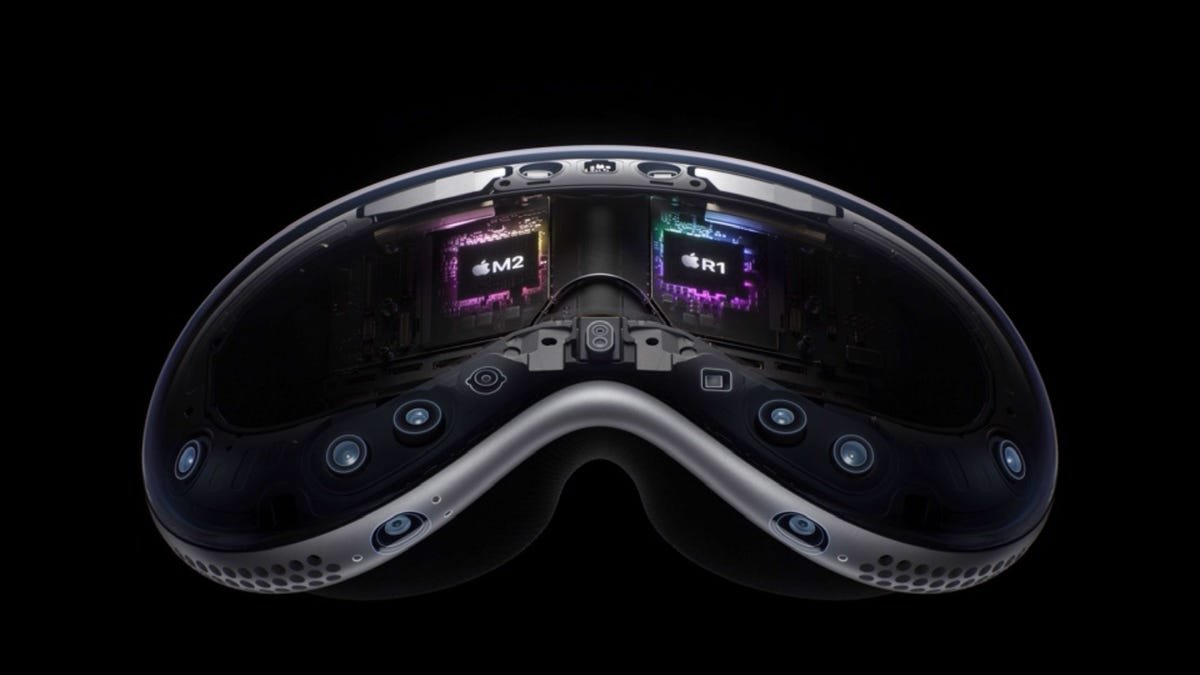
The Apple Vision Pro headset is powered by Apple’s own M2 chip, which is known for its high performance and energy efficiency. This chip is responsible for the overall operation of the headset, including processing the data from the various sensors and running the applications.
In addition to the M2 chip, the headset also features a new R1 chip. This chip has been specifically designed for real-time processing of the real world. It plays a crucial role in reducing motion sickness, a common issue with VR and AR headsets.
The Vision Pro headset is equipped with a total of 12 cameras, five sensors, and six microphones. Here’s a brief overview of what they do:
External Cameras: There are four external cameras – two pointing at the real world and two pointing downward. These cameras capture the user’s surroundings and track hand movements, respectively.
Lidar Scanner: The Lidar scanner is used for depth sensing. It helps in creating a more accurate 3D map of the environment, which is essential for placing virtual objects accurately in the real world.
TrueDepth Camera: This camera is used for facial recognition and tracking. It can also capture detailed depth information, which is useful for various applications, including avatar creation and facial expression tracking.
Internal IR Cameras: Inside the device, there are two IR cameras and a ring of LEDs to track your eyes. This eye-tracking technology allows the device to know exactly where you’re looking, enabling more intuitive interaction with the virtual environment.
Microphones: The six microphones are used for voice commands and also help in creating a more immersive audio experience by capturing the ambient sound from the user’s environment.
Speakers: The speakers are positioned close to your ears, delivering rich Spatial Audio that seamlessly blends with real-world sounds.
The display system of the Vision Pro uses micro OLED technology. This allows Apple to fit 44 pixels in the space of an iPhone pixel, resulting in a much higher resolution. Each pixel is 7.5-micron wide, and there are 23 million pixels across two panels that are the size of a postage stamp. For comparison, a 4K TV features a bit more than 8 million pixels.
The Vision Pro also works with an external battery pack that you can put in your pocket. It uses a proprietary connector that attaches to the side of the headset. Apple promises two hours of battery life, but you can also use the device when plugged in.
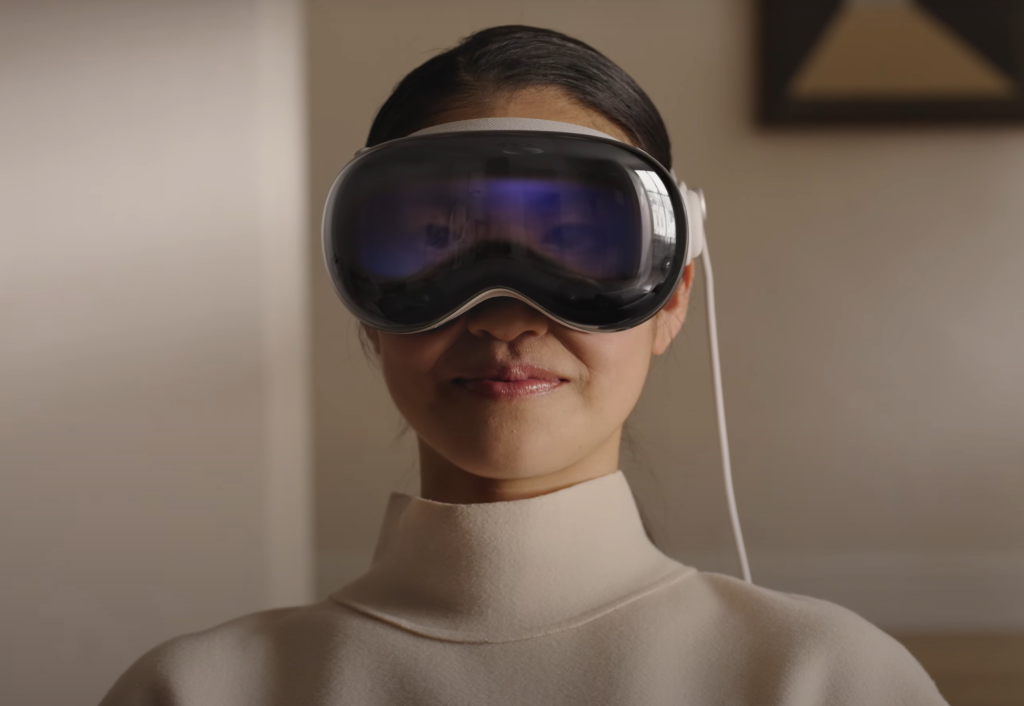
The Apple Vision Pro headset, with its advanced technology, opens up a plethora of opportunities in various fields, including Virtual Reality (VR), immersive learning, and more. Here’s how:
Virtual Reality (VR)
The Vision Pro’s high-resolution micro OLED displays and spatial audio capabilities provide a highly immersive VR experience. Whether it’s gaming, virtual tours, or social VR, users can feel as if they’re truly inside the virtual world. The precise tracking of hands and eyes allows for more natural and intuitive interactions within the VR environment. This could revolutionize the way we play games, socialize online, or explore virtual spaces.
Immersive Learning
The Vision Pro can be a powerful tool for immersive learning. By superimposing digital information onto the real world, it can provide a more engaging and interactive learning experience. For example, students can explore the solar system in 3D, walk through historical events, or visualize complex scientific concepts right in their living room. This can make learning more fun and effective, and it can also provide access to experiences that would be impossible or impractical in the real world.
Remote Work and Collaboration
The Vision Pro can transform the way we work remotely. Instead of staring at a flat screen, we can work in a virtual space where digital content can be placed anywhere around us. We can have virtual monitors of any size, organize digital documents in 3D space, or even collaborate with others in a shared virtual environment. This can make remote work more productive and enjoyable.
Accessibility
The Vision Pro can also be a powerful tool for accessibility. For people with visual impairments, it can enhance the visual information or provide alternative ways of interaction. For people with mobility issues, it can bring the world to them through virtual experiences. The eye-tracking technology can also enable gaze-based interaction, which can be useful for people who have difficulty using their hands.
Entertainment
The Vision Pro can provide a whole new level of entertainment experience. You can watch movies or concerts as if you’re in the best seat of a theater or stadium. You can also experience new forms of interactive storytelling, where you’re not just a passive viewer but an active participant in the story.
In conclusion, the Apple Vision Pro headset, with its advanced AR/VR capabilities, has the potential to benefit various fields by providing more immersive, interactive, and accessible experiences. It’s not just a new gadget; it’s a new platform that can change the way we learn, work, play, and interact with digital content.
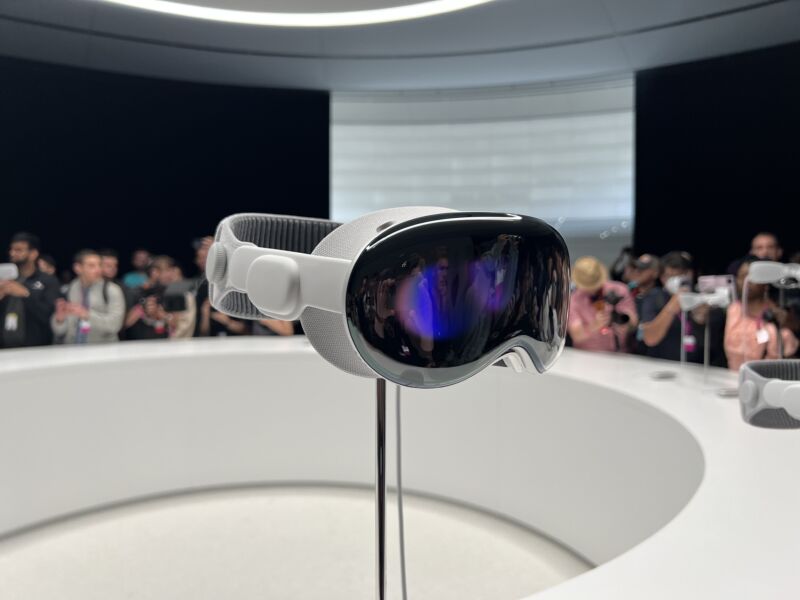
Conclusion
The launch of the Apple Vision Pro marks a significant moment in the evolution of technology. It’s not just a new product; it’s a vision of the future, a glimpse into a world where the boundaries between the physical and digital are blurred.
The combination of advanced chips and a multitude of sensors in the Apple Vision Pro headset enables a wide range of capabilities, from high-resolution visuals and spatial audio to precise tracking of hands, eyes, and the environment. This makes it possible to create a truly immersive and interactive AR experience.
As we look forward to the release of the Vision Pro, one thing is clear: the future of technology is here, and it’s more exciting than ever.
What is the Apple Vision Pro?
The Apple Vision Pro is a cutting-edge technology developed by Apple that combines advanced computer vision and artificial intelligence to enhance visual recognition and processing capabilities on Apple devices.
How does Apple Vision Pro work?
Apple Vision Pro uses sophisticated algorithms to analyze visual data and identify objects, scenes, and people. It leverages machine learning and deep neural networks to achieve accurate and fast recognition.
What are the benefits of Apple Vision Pro?
Apple Vision Pro can bring numerous benefits, such as improved image recognition, enhanced augmented reality experiences, advanced camera features, better accessibility features for individuals with visual impairments, and more.
Can Apple Vision Pro recognize objects?
Yes, Apple Vision Pro is designed to recognize a wide range of objects. It can identify common items like furniture, animals, plants, and more, allowing for advanced features in apps and services.
Is Apple Vision Pro used for augmented reality (AR)?
Yes, Apple Vision Pro is expected to play a significant role in enhancing augmented reality experiences on Apple devices. It can help with real-time object recognition, scene understanding, and spatial mapping.
